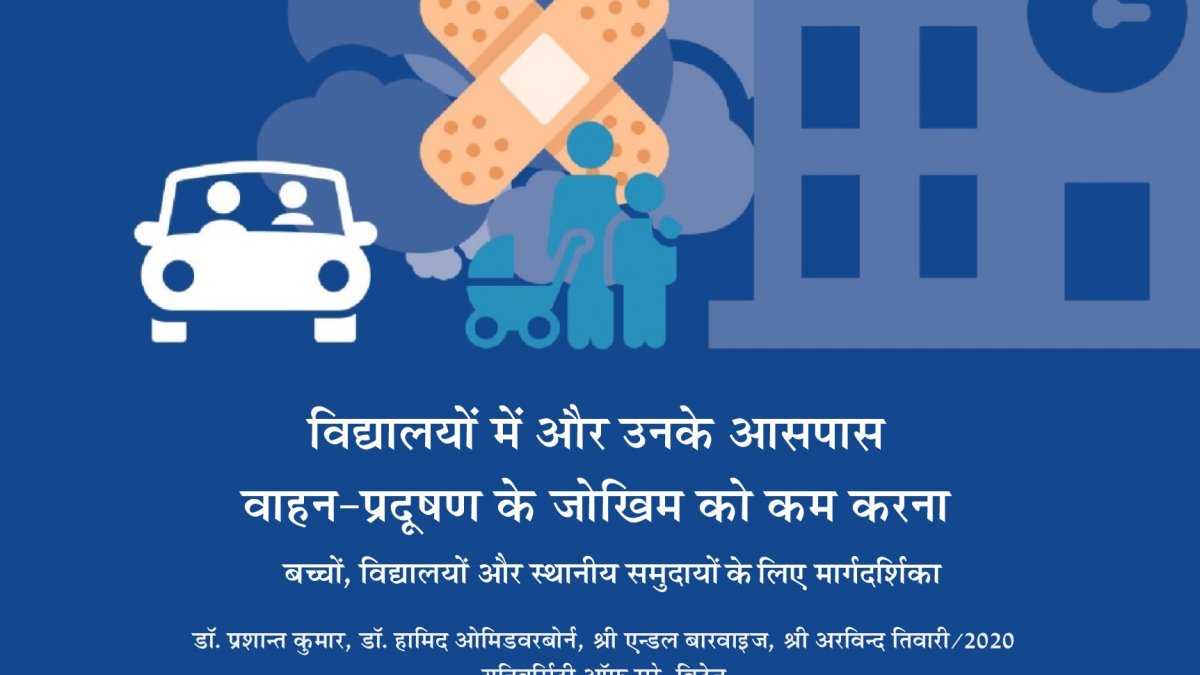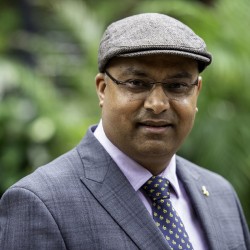Schools guidance protects children from air pollution around the world
In a great example of local research going global, a guidance booklet for schools – which originated with citizen science activities within Guildford Living Lab – has now been published in 11 languages and is being used as far afield as China and South America.
The booklet, ‘Mitigating Exposure to Traffic Pollution in and around Schools’ was published by Surrey’s Global Centre for Clean Air Research (GCARE) in June 2020, and provides actionable advice and tangible measures which can be taken to improve the air children breathe in and around schools. It has now been translated into Hindi, Punjabi, Urdu, Bengali, Tamil, Portuguese, Chinese, Spanish, Swahili, Kurdish and Arabic, and is being used in an increasing number of countries worldwide.
The guidance is based on research undertaken by GCARE with local school and community groups in Guildford, UK, along with input from the broader Guildford Living Lab (GLL) community including parents, schools, academics, councilors, environmental groups, professional bodies and other experts.
This community work has since evolved into a global collaboration, as international partners have come together to translate and adopt the guidance in different communities across the world. In recent months, the document has been translated into Chinese by researchers at Southeast University (Nanjing, China), and into Spanish and Portuguese by researchers and collaborators across South America, including at the University of Colombia in Bogotá and the University of São Paulo, Brazil. The translated versions represent a significant step towards reduced air pollution exposure for schoolchildren worldwide.
Professor Shijie Cao of the Southeast University in Nanjing, China, commented: “Traffic pollution has been listed as one of the top pollution sources in urban cities, leading to severe health impacts, especially on children. This guidance in Chinese (PDF) will enable schools, children and communities to make correct decisions, and further help reduce the exposure risk of children to air pollution.”
Professor Maria de Fatima Andrade, a lecturer at the University of São Paulo in Brazil, said: “There are many studies related to the impact of air pollution on human health, and they all indicate that the most harm is placed on children and the elderly, but these studies and their recommendations are not translated into the language of the schools and the children.
“The Portuguese version of this brochure (PDF) will make a large impact. It will be shared through Non-Governmental Organisations and governmental secretaries involved with environment and education.”
Professor Nestor Rojas of the National University of Colombia, Bogotá, commented:
“The results of air pollution research are normally in the form of research papers and sometimes reports for decision makers. This means many people don’t have a clear idea of how to apply them to their everyday life. In contrast, this guidance in Spanish (PDF) has been carefully designed to be used by schools, children and communities, based on state-of-the-art research evidence.
“We aim to reach as many schools in Colombia as possible, starting with large cities such as Bogotá, Medellin and Barranquilla, then moving to smaller cities.”
The GCARE team thank all collaborators and reviewers, and acknowledge support received from the University of Surrey’s Living Lab Grant (2019-20), EPSRC PhD studentship projects (1948919 and 2124242), the iSCAPE project (EU H2020 funding under Grant Agreement No. 689954), and the EPSRC-funded INHALE project (EP/T003189/1).
See and download the English and translated versions of the guidance.




